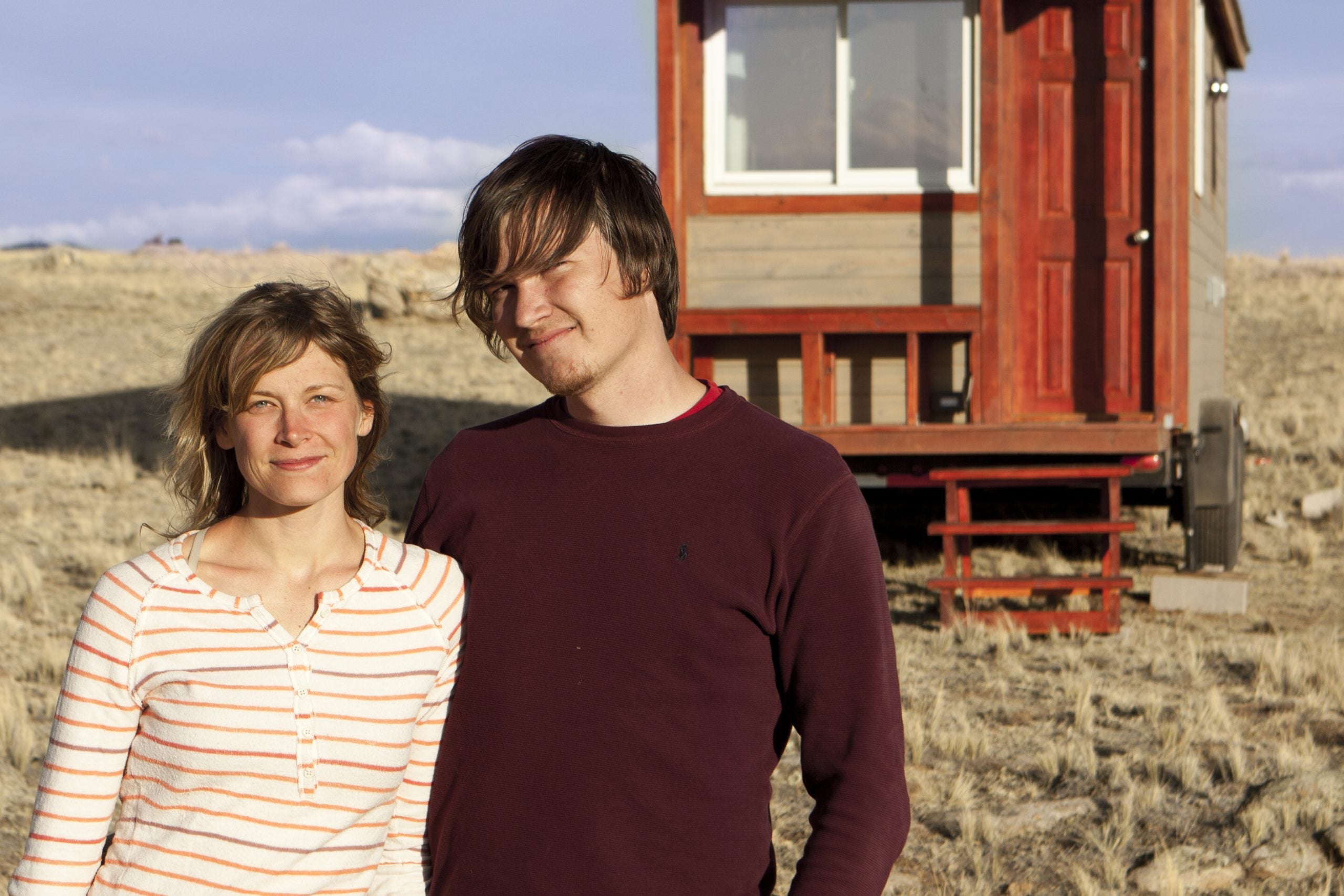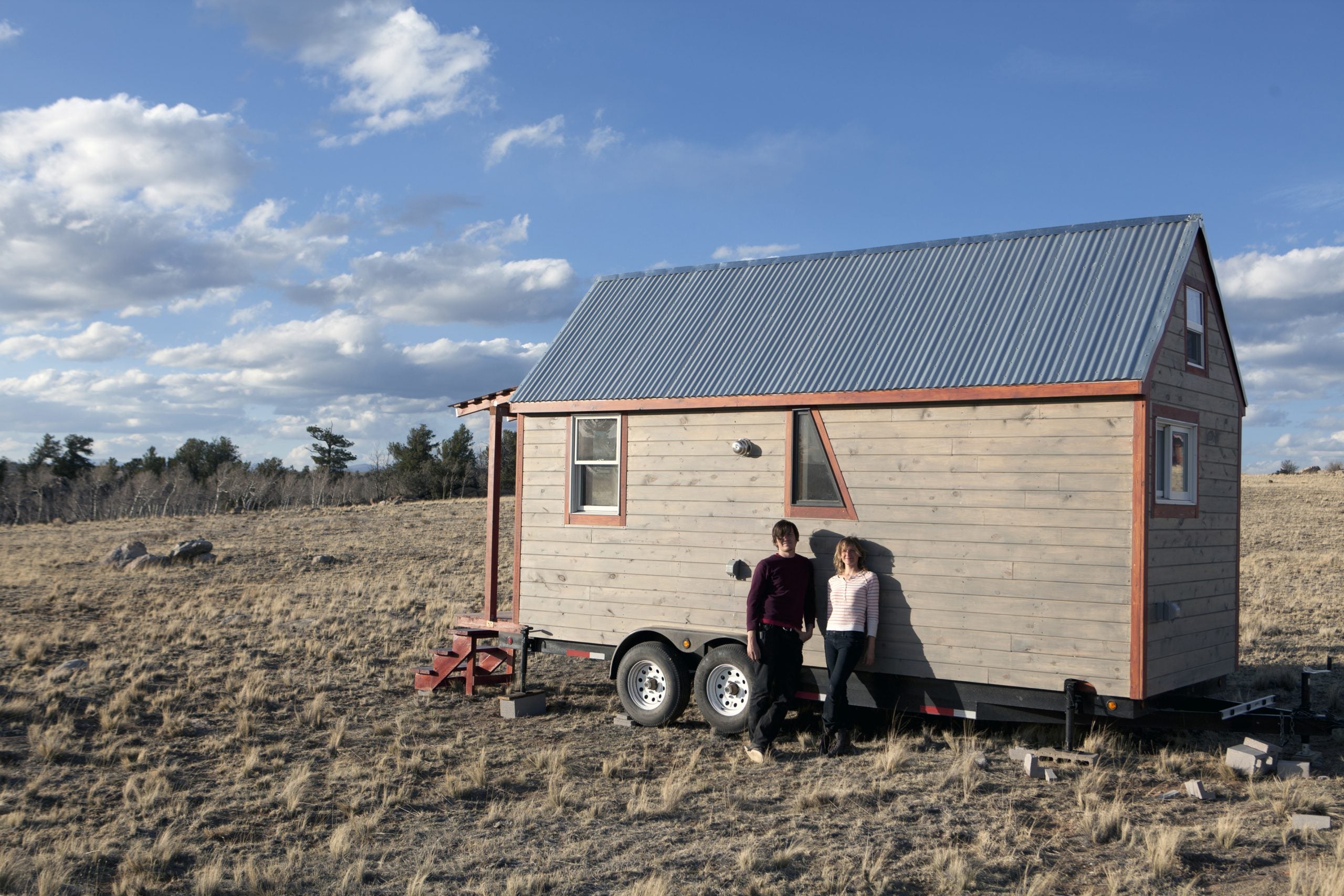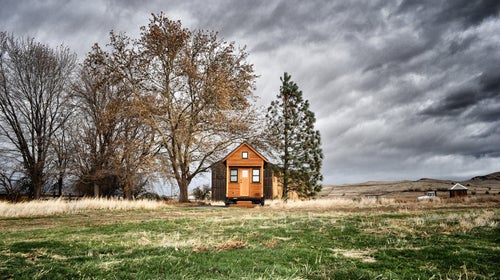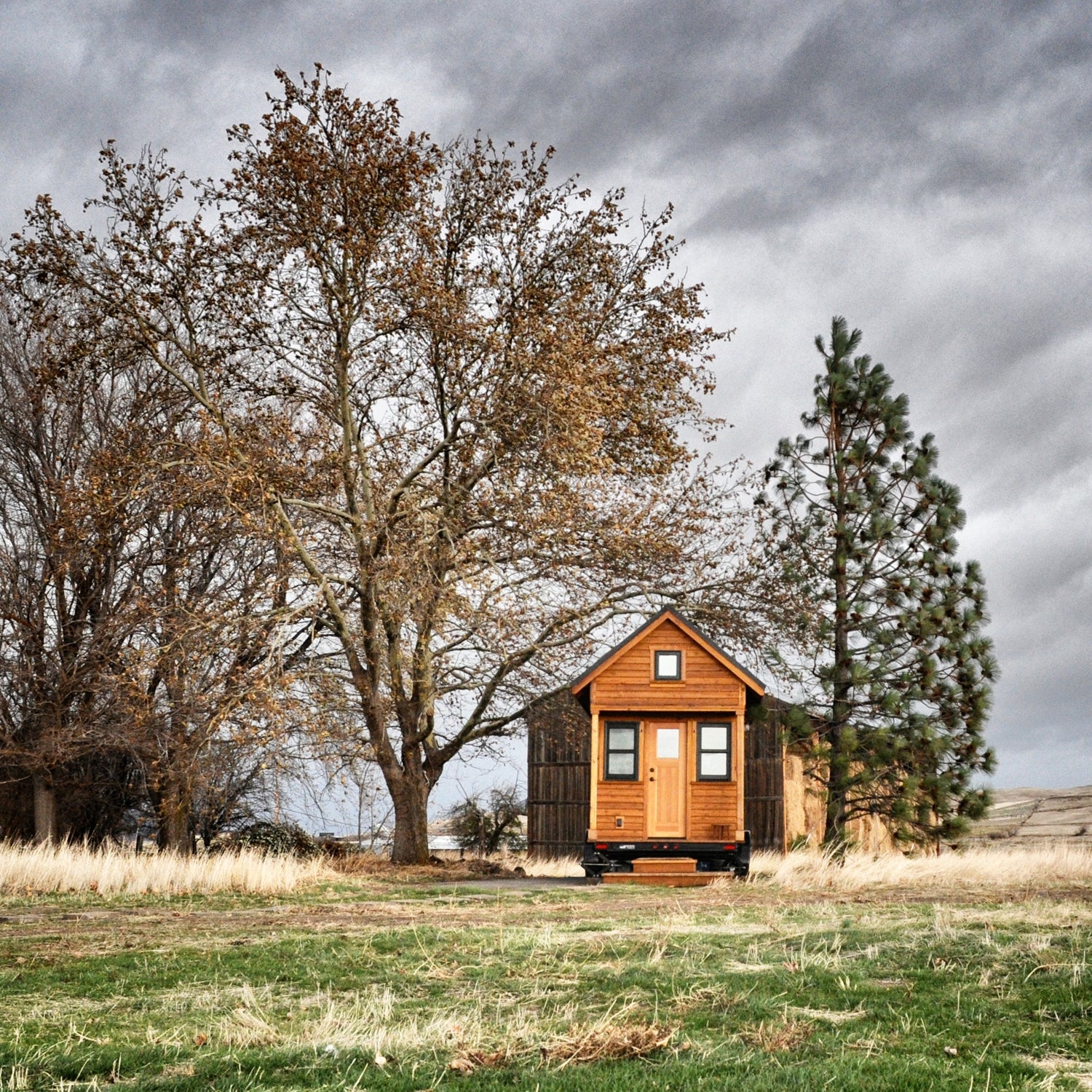When people talk about simplifying their lives, the conversation typically turns to automated payments, task management apps, and clutter-free desktops. But for Christopher Smith, co-director of , “simplifying” meant shrinking his living quarters to just 124 square feet—smaller than a McMansion’s tool shed—and jettisoning most of his belongings.
With no prior construction experience and co-director/girlfriend Merete Mueller behind the camera, Smith set off to build a diminutive, eco-friendly abode near Hartsel, Colorado. Their outsized documentary is screening now and .

OUTSIDE: House sizes in America have doubled since the 1970s, even though family sizes have shrunk. What’s driving our appetite for square footage?
Smith: During the past few decades, people didn’t generally question the need to own a large home. It signified a better life and a better future for their kids. Striving toward a huge house is just what you did.
Mueller: It also has to do with building codes that date back to the 1950s. People were still reacting to the shanty towns that were common during the 1930s and it was an era when space and resources for new development seemed unlimited. So they established minimum sizes for structures considered “houses.” There was never any maximum, so we just kept building—and filling the extra space with stuff.
Why do you think the small house movement has attracted so much attention?
Smith: The definition of “quality of life” seems to be shifting a bit, and some people—particularly millennials—are warming to the idea that you can live smaller to simplify your life. For me, it was buying some land in Colorado and trying to realize my dream of building my own home. I kept running into roadblocks. Going small started to make more and more sense.
Mueller: When we talk to other small house owners, we usually find that it came down to a financial equation: they wanted to start a business or get out of debt or open up some money to pursue a passion. The environmental benefit of living small is a bonus, but for us—we both have backgrounds in sustainability—it was one of the key drivers. We liked the idea of consuming less.
Christopher, you had no prior construction experience going into the project. Where did you start?
Smith: A lot people start out just like me—with no experience. First, I spent hours researching small houses online and looking for inspiration. There are guides and plans out there, but nothing like the resources for regular construction, so in a way it isn’t as overwhelming. I ended up breaking the project into about 15 stages and learning what I needed to know for each individual stage. From start to finish, the house took about a year to build.

Granted, you guys are working on opposite coasts right now on a few different projects. But when you come home, what’s the biggest challenge living together in your tiny house?
Smith: It’s actually very livable. We don’t feel cramped and we end up using a lot more of our outdoor space and the resources in our community. It just forces you to create your own personal space, whether it’s putting on headphones or going out for a walk.
Mueller: To me, it’s a lot like New York City where you use your apartment as a home base but spend more time in cafés, parks, and other public places. It’s kind of a suburban phenomenon that we spend so much time behind closed doors in these big houses with tons of rooms.
Any advice for readers who might be thinking about building a small house of their own?
Smith: If you’re just starting to think about building a small house, you could get creative and tape an outline on your floor to get a sense of the footprint. This won’t give you the same feeling of being inside but it can give you a rough idea, and that’s a start.
If you’re thinking about it seriously, visit a small house and spend time there before you commit to anything. Sleep there, wake up there. Make sure you can see yourself living in that kind of space.
More than anything, though, keep in mind that you don’t have to build a small house to downsize. You try on a more simplified life today, starting from right where you are. Get rid of a few things you don’t use and just see how far it takes you.


